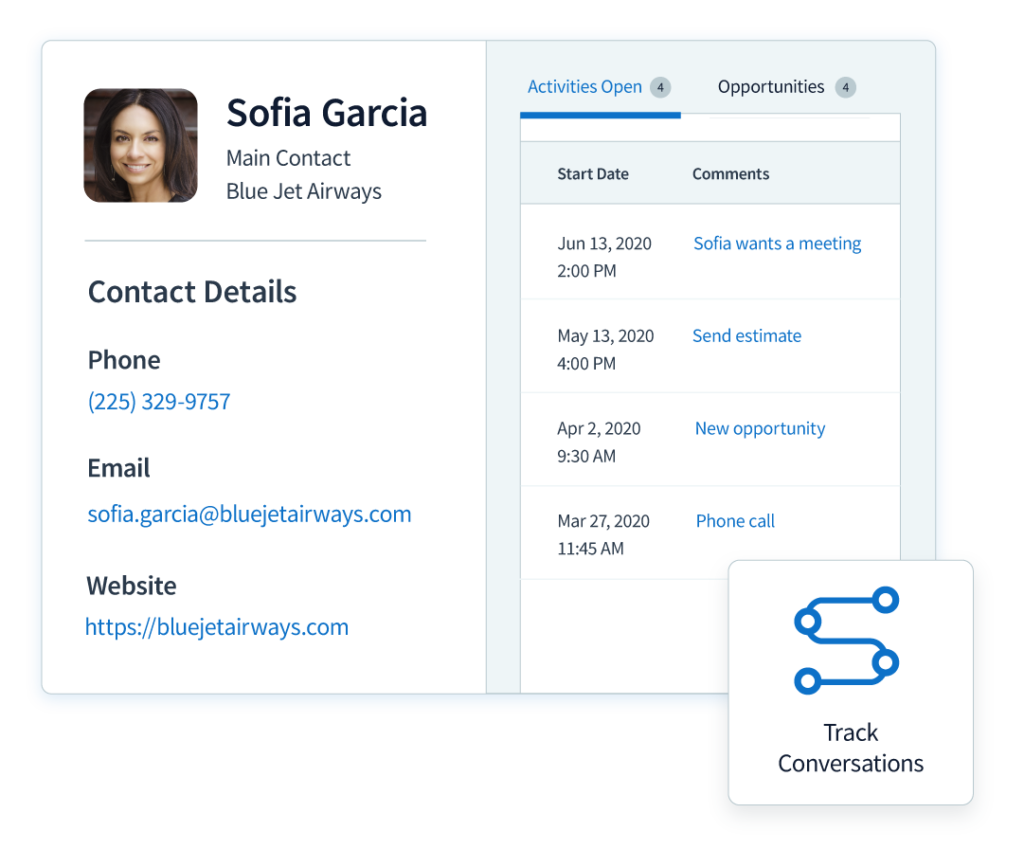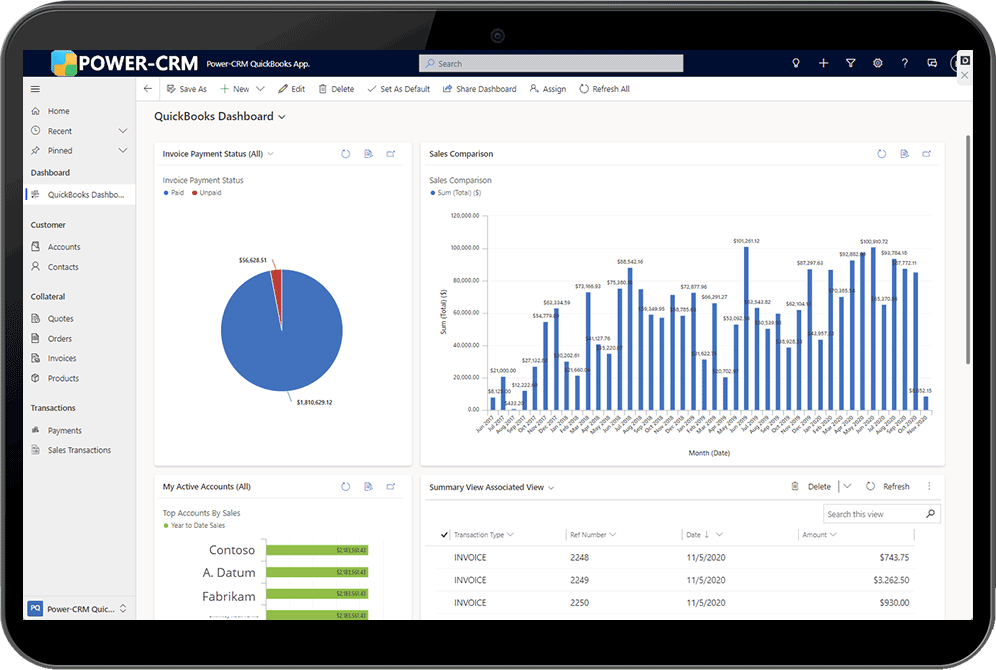quick crm sets the stage for this enthralling narrative, offering readers a glimpse into a story that is rich in detail and brimming with originality from the outset. In today’s fast-paced business landscape, the significance of a quick CRM cannot be overstated; it serves as a vital tool for enhancing customer relationships and boosting operational efficiency. By streamlining communication and providing valuable insights, a quick CRM empowers businesses to better understand their clients’ needs and respond promptly, fostering a more robust connection with their customer base.
The features of a quick CRM are pivotal in defining its effectiveness, with tools that cater to the unique demands of modern enterprises. From automation capabilities to comprehensive analytics, each function contributes to a seamless sales process, allowing teams to focus on what truly matters: nurturing relationships and driving growth.
Importance of Quick CRM

In the fast-paced landscape of modern business, the adoption of a quick Customer Relationship Management (CRM) system is increasingly vital. A quick CRM allows organizations to manage interactions with customers efficiently and effectively, leading to improved satisfaction and retention. This technology is essential for businesses looking to enhance their customer relationships while streamlining their operations.A quick CRM system not only facilitates better communication with customers but also automates various processes that reduce manual workloads.
When evaluating customer relationship management systems, a crm yahoo offers robust tools that can greatly assist in managing client interactions. Moreover, engaging in a demo pipedrive session can further clarify how this platform can be integrated into your sales strategy, providing a comprehensive approach to customer engagement and sales tracking.
By providing timely access to customer data, businesses can respond to inquiries more swiftly and tailor their services to meet specific client needs. The efficiency gained through automation of routine tasks allows employees to focus on higher-value activities that contribute to growth and innovation.
For businesses looking to streamline their sales processes, a demo pipedrive can provide valuable insights into how this CRM solution can enhance productivity and sales effectiveness. Additionally, many organizations also consider the capabilities of crm yahoo , which offers unique features tailored for various business needs. Exploring these options can significantly benefit your team’s performance.
Enhancement of Customer Relationships
Utilizing a quick CRM significantly improves the quality of customer relationships. This enhancement stems from several key features that allow businesses to interact seamlessly with their clients. The following are critical aspects of an effective quick CRM system:
- Real-time Data Access: Instant access to customer information enables timely responses and personalized service.
- Automated Communication: Automated follow-ups, reminders, and notifications help maintain consistent engagement with customers.
- Centralized Information: Storing all customer interactions in one place ensures that employees can provide informed support at all times.
- Analytics and Reporting: Built-in analytics tools allow businesses to track customer behavior and preferences, leading to improved decision-making.
- Integration Capabilities: Quick CRM systems can often integrate with other business tools, enhancing overall efficiency and performance.
The combination of these features translates into stronger loyalty and trust from customers, as they feel valued and understood.
Improvement of Efficiency
A quick CRM system plays a pivotal role in enhancing operational efficiency within a business. By automating routine tasks and centralizing information, organizations can achieve more with less effort. The following points illustrate how efficiency is improved through the use of a quick CRM:
- Time Savings: Automation of repetitive tasks reduces the time employees spend on administrative work.
- Improved Collaboration: A centralized system promotes teamwork, allowing employees from different departments to share insights and strategies.
- Streamlined Processes: Workflows can be designed to minimize bottlenecks, resulting in faster response times and improved service delivery.
- Enhanced Customer Tracking: Quick CRM facilitates better tracking of customer interactions, ensuring no inquiries are overlooked and follow-ups are timely.
By focusing on these areas, businesses can not only improve their efficiency but also create a more agile and responsive organization that meets the evolving needs of its customers.
Key Features of an Effective Quick CRM System
The effectiveness of a quick CRM system is determined by specific essential features that ensure its utility in managing customer relationships. The following components are instrumental in defining a successful CRM solution:
- User-friendly Interface: A straightforward and intuitive interface promotes ease of use among employees, facilitating quicker adaptation to the system.
- Customization Options: Flexibility to tailor the CRM to specific business needs enhances its relevance and effectiveness.
- Mobile Access: Mobile compatibility allows users to access critical information on-the-go, ensuring that customer interactions are not limited to office hours.
- Security Features: Robust security measures protect sensitive customer data, building trust with clients and complying with regulations.
In conclusion, the significance of a quick CRM in modern business cannot be overstated. Its ability to enhance customer relationships, improve efficiency, and incorporate key features makes it an indispensable tool for organizations striving to thrive in today’s competitive landscape.
Features of Quick CRM

Quick CRM solutions are designed to enhance customer relationships, streamline business processes, and improve overall efficiency. By offering a suite of essential features, these tools allow organizations to manage their interactions with clients effectively. The core functionalities of Quick CRM cater to a variety of business needs, from sales management to customer support, thereby ensuring that teams can operate cohesively and productively.The features of Quick CRM systems can significantly impact sales processes.
These solutions often include capabilities such as contact management, sales tracking, reporting and analytics, automation tools, and integration with other software applications. These functionalities not only simplify the management of customer information but also enhance communication and promote a data-driven approach to sales strategies.
Essential Features of Quick CRM Solutions
The following features represent the fundamental capabilities provided by Quick CRM tools, which contribute to improved workflows and sales efficiency:
- Contact Management: A central repository for storing all customer data, including contact information, communication history, and preferences. This feature allows for easy accessibility and organized tracking of customer interactions.
- Sales Tracking: Tools to monitor the sales pipeline, including tracking leads, opportunities, and conversion rates. This functionality aids sales teams in identifying trends and optimizing their approach to close deals.
- Reporting and Analytics: Comprehensive dashboards and reports provide insights into sales performance, customer behavior, and market trends. This data-driven approach helps organizations make informed decisions based on accurate metrics.
- Automation Tools: Features that automate routine tasks, such as follow-up emails, reminders for meetings, and scheduling. This not only saves time but also reduces the likelihood of human error.
- Integration Capabilities: Quick CRM systems often allow integration with other business applications, such as email marketing tools, accounting software, and e-commerce platforms, creating a seamless flow of information.
Comparison of Quick CRM Tools in the Market
When evaluating Quick CRM solutions, it is crucial to compare their functionalities and how well they meet varying business needs. Key players in the market, such as HubSpot CRM, Zoho CRM, and Salesforce Essentials, offer distinct features and pricing models, allowing organizations to choose the best fit for their operations.
| CRM Tool | Contact Management | Sales Tracking | Automation | Integrations |
|---|---|---|---|---|
| HubSpot CRM | Yes | Yes | Basic Automation | Extensive |
| Zoho CRM | Yes | Advanced Tracking | Comprehensive | Good |
| Salesforce Essentials | Yes | Advanced Tracking | Comprehensive | Extensive |
Streamlining Sales Processes with Quick CRM Features
Implementing Quick CRM features can significantly enhance the efficiency of sales processes. For instance, by utilizing contact management capabilities, sales representatives can quickly access customer data, allowing for personalized communication that fosters stronger relationships. Similarly, the sales tracking feature enables teams to visualize their pipeline, ensuring no lead is overlooked and optimizing follow-up strategies.In practical applications, companies like XYZ Corp have successfully leveraged Quick CRM to streamline their sales processes.
By automating routine communications through their CRM, they reduced the time spent on administrative tasks by 30%, allowing their sales team to focus on building relationships and closing deals. This illustrates the tangible benefits that Quick CRM can deliver to organizations aiming to refine their sales efforts and improve customer satisfaction.
Implementation Strategies for Quick CRM

Implementing a Quick CRM system within an organization involves strategic planning and execution. It is essential to follow a structured approach to ensure that the CRM system aligns with the organizational goals and meets the users’ needs. This guide Artikels effective implementation strategies, staff training best practices, and common challenges encountered during the process, along with solutions for overcoming these hurdles.
Step-by-Step Guide for Implementing Quick CRM
The process of implementing a Quick CRM system can be simplified into a series of steps. This structured approach assists organizations in ensuring a smooth transition and maximizing the utility of the CRM system. The following steps are recommended:
- Assess Organizational Needs: Identify specific business requirements and goals that the CRM should address.
- Select the Right CRM: Choose a Quick CRM solution that aligns with those identified needs and offers the necessary features.
- Plan the Implementation: Develop a detailed project plan including timelines, responsibilities, and resources needed.
- Data Migration: Transfer existing data into the new CRM, ensuring data quality and integrity during the process.
- Integration: Integrate the CRM with existing systems and tools to create a cohesive technology environment.
- Test the System: Conduct thorough testing of the CRM to identify any issues before full deployment.
- Launch the CRM: Go live with the new system and start using it in day-to-day operations.
- Monitor and Optimize: Continuously assess the system performance and make adjustments as necessary based on user feedback.
Best Practices for Training Staff on Quick CRM Tools
Training staff effectively is crucial for maximizing the benefits of the Quick CRM system. Proper training ensures that employees are equipped with the necessary skills and knowledge to use the tool efficiently. The following best practices are recommended for effective training:
“An effective training program not only improves user confidence but also enhances overall productivity.”
- Develop a Comprehensive Training Plan: Artikel training objectives, methods, and materials tailored to different user roles within the organization.
- Utilize Multiple Training Formats: Incorporate various training methods such as workshops, online tutorials, and one-on-one coaching to cater to different learning styles.
- Encourage Hands-On Practice: Allow users to engage with the CRM in a controlled environment to build familiarity and confidence.
- Provide Ongoing Support: Establish a support system, including access to help resources and regular Q&A sessions, to assist users post-training.
- Solicit Feedback: Gather feedback from users to continuously improve the training program and address any specific challenges they face using the CRM.
Common Challenges in Quick CRM Implementation and Solutions
Organizations may encounter various challenges during the implementation of a Quick CRM system. Recognizing these issues early and developing strategies to address them can significantly enhance the implementation process. The following challenges are commonly observed:
“Anticipating challenges and having solutions ready can lead to a more successful CRM implementation.”
- Resistance to Change: Employees may be hesitant to adopt new technology. To mitigate this, involve key stakeholders early in the process and communicate the benefits clearly.
- Data Quality Issues: Poor data quality can hinder CRM effectiveness. Establish data governance practices to maintain data accuracy and consistency.
- Insufficient Training: Inadequate training can lead to underutilization of CRM features. Ensure comprehensive training sessions are conducted and provide ongoing support.
- Integration Challenges: Difficulty integrating the CRM with other systems can arise. Conduct thorough research on integration capabilities and involve IT specialists to facilitate a seamless process.
- Budget Constraints: Resource limitations may hinder implementation efforts. Develop a realistic budget that includes all expected costs and seek management buy-in for essential expenditures.
Case Studies of Successful Quick CRM Usage
The implementation of Quick CRM solutions has been transformative for many businesses across various industries. These case studies illustrate successful strategies, outcomes, and customized adaptations of Quick CRM, showcasing the flexibility and effectiveness of the system in enhancing organizational performance.
Retail Industry Success
In the retail sector, one prominent case study involves a mid-sized clothing retailer that adopted Quick CRM to streamline its customer relationship management processes. Prior to implementation, the retailer faced challenges in tracking customer preferences and managing communications effectively. By leveraging Quick CRM, the retailer was able to segment their customer base, allowing for targeted marketing campaigns. The results were significant:
- Increased Customer Engagement: The retailer observed a 25% increase in customer engagement rates through personalized email marketing driven by insights from Quick CRM.
- Improved Sales Performance: Monthly sales rose by 15% following targeted promotions based on customer data analytics.
- Enhanced Customer Retention: The loyalty program integration led to a 30% improvement in repeat purchases.
Healthcare Industry Adaptation
A healthcare provider incorporated Quick CRM to improve patient interaction and streamline appointment scheduling. Before the implementation, the provider struggled with patient follow-ups and feedback collection. The Quick CRM system facilitated automated reminders and feedback surveys which resulted in noteworthy improvements.The outcomes of this adaptation included:
- Reduced No-Show Rates: The provider experienced a 40% decrease in no-show appointments due to automated reminders sent via SMS and email.
- Efficient Feedback Mechanism: Patient feedback collection increased by 50%, providing valuable insights for quality improvement.
- Streamlined Communication: Improved communication channels led to a 35% increase in patient satisfaction scores.
Financial Services Implementation
In the financial services sector, a small investment firm utilized Quick CRM to manage client relationships and streamline portfolio management. The firm faced difficulties in tracking client interactions and portfolio updates, which affected client satisfaction levels. By implementing Quick CRM, the firm achieved remarkable results.Key benefits included:
- Enhanced Client Insights: The firm gained deeper insights into client preferences, allowing for tailored investment strategies.
- Increased Productivity: Advisors reported a 20% increase in productivity through efficient task management and automated reporting features.
- Stronger Client Retention: The firm saw a 15% increase in client retention rates as a result of better relationship management.
Manufacturing Industry Customization
A manufacturing company adopted Quick CRM to improve supply chain communication and customer service. Prior to implementation, the company faced issues with order tracking and customer inquiries. The Quick CRM solution was customized to meet the unique needs of the manufacturing process.The benefits realized by this company included:
- Improved Order Tracking: The company achieved real-time order tracking, which reduced customer inquiries by 30%.
- Streamlined Customer Service: Enhanced customer service responsiveness led to a 25% increase in customer satisfaction ratings.
- Operational Efficiency: Integration of Quick CRM with production schedules improved overall operational efficiency by 20%.
“The adaptability of Quick CRM to industry-specific needs has proven essential in driving measurable improvements across diverse business landscapes.”